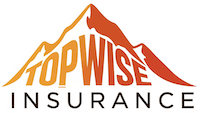Car Insurance for Classic Cars Value Based Policies 2025
Published on August 11, 2025

Michael Reyes
Auto Insurance Specialist
Michael Reyes is an auto insurance specialist with 8+ years in claims and agent roles; expert in premiums, telematics, and young-driver discounts.
Car Insurance for Classic Cars Value Based Policies 2025: Ultimate Guide for Owners
Understanding Value-Based Policies for Classic Cars in 2025
Classic cars aren’t just vehicles — they’re rolling pieces of history. Whether it’s a 1969 Camaro Z28, a 1955 Mercedes 300SL, or a 1990s Japanese sports icon, these vehicles often appreciate in value, making the right insurance policy essential. In 2025, value-based policies have become the gold standard for owners who want coverage tailored to their car’s true worth, not just its depreciated market value.
What Makes a Policy “Value-Based”
A value-based policy ensures that, in the event of a total loss, you receive a payout based on an agreed-upon valuation rather than the insurer’s estimate at the time of the claim. This is especially important for classics, where market fluctuations can be dramatic.
Difference Between Agreed Value and Stated Value Policies
- Agreed Value: The insurer and the owner agree on the car’s value before the policy starts.
- Stated Value: The owner declares a value, but the payout may be less if the insurer determines a lower market value at claim time.
In 2025, most savvy collectors choose agreed value policies to avoid disputes and ensure they can replace or restore their vehicles without a financial shortfall.
Why Value-Based Coverage Matters for Classic Car Owners
Without a value-based policy, you risk undercompensation after an accident or theft. Many standard insurers undervalue classics because they use depreciation models built for modern cars, not appreciating assets.
The State of the Classic Car Insurance Market in 2025
The 2025 market for classic car insurance is shaped by rising collector interest, economic shifts, and new underwriting technologies.
Market Trends and Pricing Factors
- Growing demand for 1980s–2000s vehicles, now entering the “classic” category.
- Increased premiums due to higher repair and parts sourcing costs.
- Expansion of digital appraisal tools and AI-based risk analysis.
Impact of Inflation and Collector Demand
Inflation has boosted restoration and maintenance costs, which in turn pushes insurance premiums higher. Collector demand, particularly from younger buyers entering the market, has driven prices up for certain models, making accurate valuation more crucial than ever.
Technological Innovations in Classic Car Insurance
Insurers are now using:
- Blockchain-based ownership verification to prevent fraud.
- AI-powered valuation tools that analyze auction data in real time.
- Telematics devices for optional usage-based discounts.
Eligibility Requirements for Value-Based Classic Car Insurance
Not every vehicle qualifies for a value-based policy. Insurers set specific requirements to protect themselves and ensure they’re covering genuine collectible assets.
Age and Condition of the Vehicle
Most insurers require the car to be at least 20–25 years old to be classified as a classic, although certain limited-edition or historically significant modern cars may qualify sooner. Condition matters, too — cars in original, restored, or concours-level condition are favored.
Usage Restrictions and Mileage Limits
Classic car insurance often comes with annual mileage caps (e.g., 3,000–5,000 miles) because these vehicles are intended for occasional drives, shows, and exhibitions — not daily commuting.
Storage and Security Requirements
Insurers typically require secure storage, such as:
- Locked, enclosed garages
- Security systems or GPS trackers
- Fire safety measures
Proper storage reduces the risk of theft, vandalism, and environmental damage.
How Insurers Determine the Value of a Classic Car
Establishing the car’s value is the cornerstone of a value-based policy.
Professional Appraisals
An independent appraiser examines:
- Condition of bodywork and paint
- Mechanical soundness
- Historical authenticity
They then provide a report that both owner and insurer can rely on.
Historical Sales Data and Auction Results
Insurers reference past auction results, sales databases, and dealer listings to gauge market trends for similar models.
Modifications, Restoration, and Authenticity
- Original parts often increase value.
- Period-correct restorations are valued more highly than custom modifications, unless the mods are rare and sought after.
- Documented restoration work with photographs and receipts can add thousands to the valuation.
Pros and Cons of Value-Based Policies
Benefits for Owners
- Guaranteed payout based on agreed value
- Protection against market volatility
- Peace of mind knowing the vehicle’s worth is recognized
Potential Drawbacks and Limitations
- Higher premiums compared to standard policies
- Annual revaluation may be required
- Strict eligibility and storage requirements
Steps to Get the Best Value-Based Policy in 2025
Choosing the Right Insurer
Look for insurers specializing in classic and collector cars, as they have a better understanding of market dynamics.
Negotiating the Agreed Value
Provide detailed evidence of your car’s worth — appraisals, restoration receipts, and auction results — to strengthen your position.
Reviewing Policy Terms and Exclusions
Read the fine print for:
- Mileage limits
- Geographic coverage
- Event participation rules (track days may be excluded)
Cost Factors for Classic Car Value-Based Insurance
Vehicle Value and Rarity
Rare, high-demand models carry higher premiums because they’re more expensive to replace or repair.
Driving History and Location
A clean driving record lowers costs, while living in an area prone to theft or extreme weather can increase them.
Coverage Level and Add-Ons
Optional extras like roadside assistance, spare parts coverage, or overseas shipping insurance add to the total premium.
Common Mistakes to Avoid When Buying Classic Car Insurance
Underinsuring the Vehicle
Failing to keep the agreed value updated could leave you out of pocket if the market price rises.
Ignoring Policy Exclusions
Some policies exclude flood damage, track events, or unapproved modifications.
Not Updating the Agreed Value Over Time
The collector market is dynamic — annual reviews ensure your payout reflects current market value.
Legal and Tax Implications of Classic Car Insurance in 2025
State Regulations and Compliance
Each state in the U.S. may have different definitions for “classic,” “vintage,” or “historic” vehicles, impacting eligibility and taxation.
Tax Benefits for Collectible Vehicles
Some jurisdictions allow tax deductions for vehicles used in exhibitions or as part of a business collection.
Case Studies: Real-World Examples of Value-Based Coverage
Restored Muscle Car
A 1970 Dodge Challenger R/T insured for $95,000 under an agreed value policy — fully compensated after a fire.
European Vintage Convertible
A 1965 Jaguar E-Type, appraised at $180,000, received full payout after flood damage.
Limited-Edition Sports Car
A 1998 Toyota Supra Turbo, modified with rare OEM parts, insured for $120,000 — no dispute at claim time.
Expert Tips for Maximizing Your Classic Car’s Insurance Value
Regular Maintenance and Documentation
Keep records of all services, repairs, and restorations — they’re valuable for both appraisals and claims.
Using Specialty Brokers
A broker with collector market knowledge can negotiate better rates and valuations.
Leveraging Membership in Car Clubs
Membership often brings discounts and access to exclusive insurer programs.
FAQs on Car Insurance for Classic Cars Value-Based Policies 2025
Q1: What is the main advantage of an agreed value policy for a classic car?
A1: It ensures you receive the full pre-agreed amount in case of total loss, avoiding disputes over market value.
Q2: How often should I update my agreed value?
A2: At least once a year, or after any major restoration work.
Q3: Are modifications covered in a value-based policy?
A3: Yes, if documented and agreed upon during valuation.
Q4: Can I drive my classic car daily under a value-based policy?
A4: Generally no — most policies limit mileage to preserve the car’s condition.
Q5: Is roadside assistance included?
A5: Some insurers offer it as an optional add-on.
Q6: Does inflation affect my policy payout?
A6: Not if you have an agreed value policy, provided you regularly update the valuation.
Conclusion: Why Value-Based Policies are the Smart Choice for 2025
In 2025, value-based policies remain the most reliable way to protect your investment in a classic car. They account for appreciation, market demand, and historical significance — ensuring that if the unthinkable happens, you can recover without compromise. By working with a knowledgeable insurer, maintaining accurate valuations, and meeting eligibility criteria, classic car owners can preserve not only their vehicles but also the stories and history behind them.
You Might Also Like
Car Insurance for Snowbirds 2025: Seasonal Driver’s Guide to Coverage
Aug 12, 2025Car Insurance for Immigrants 2025: Complete Guide to Getting Covered in the U.S.
Aug 12, 2025Car Insurance for DUI Drivers 2025: How to Get Coverage After a Conviction
Aug 12, 2025Pay Per Mile Car Insurance Pros and Cons 2025: The Complete Guide
Aug 11, 2025How to Cancel Car Insurance Policy Without Penalty 2025: Expert Guide
Aug 11, 2025
